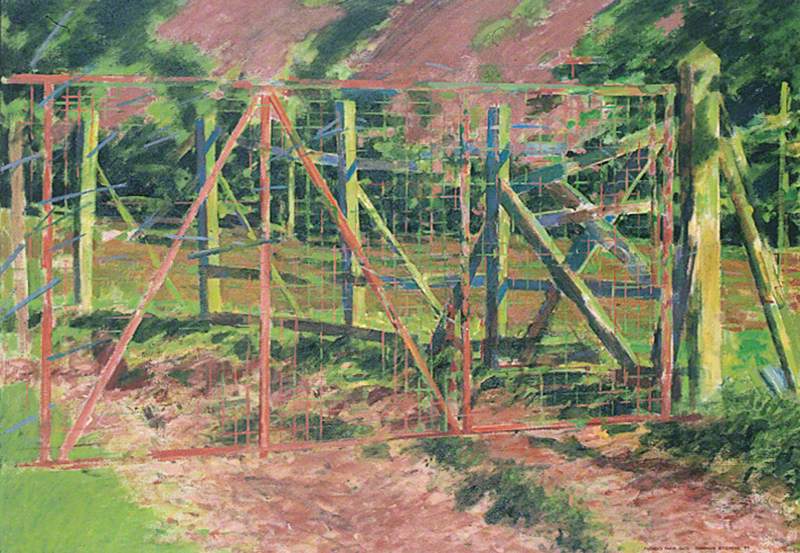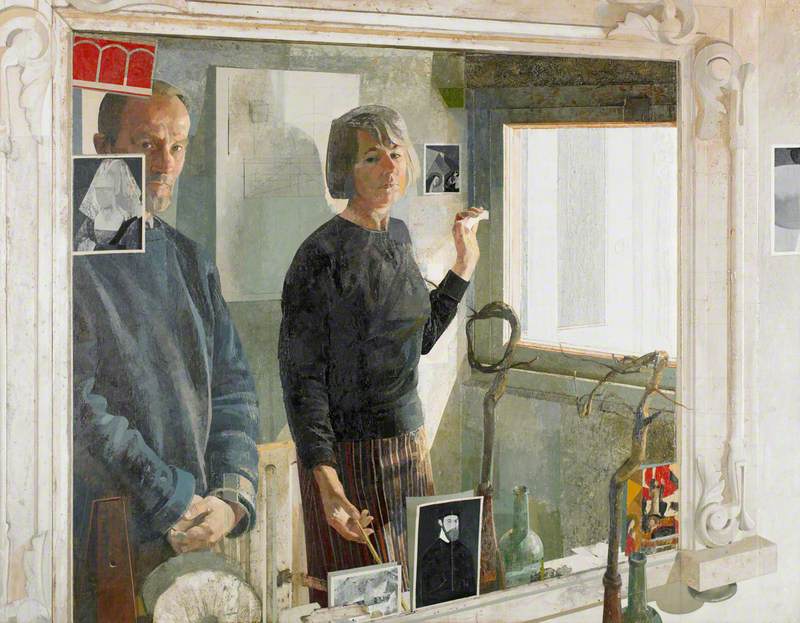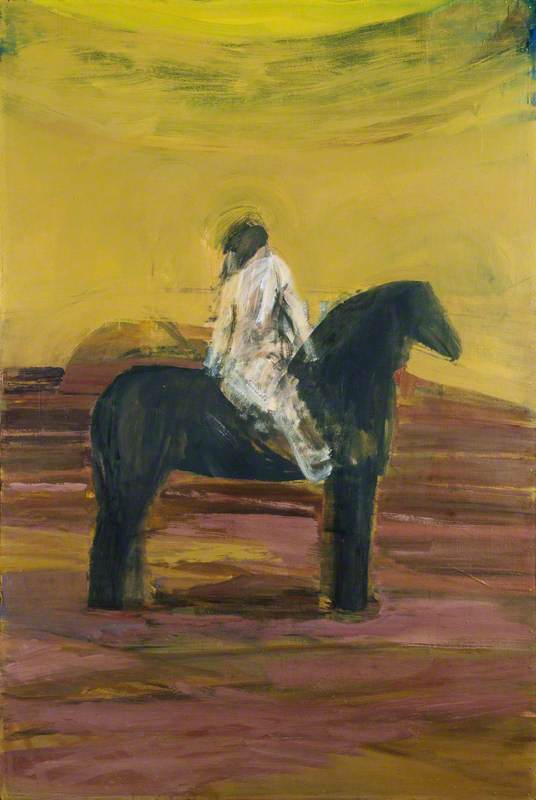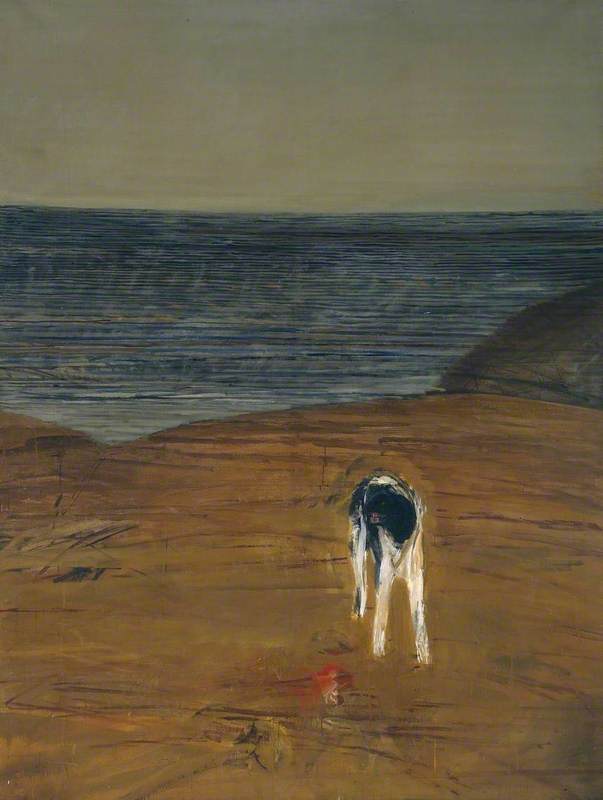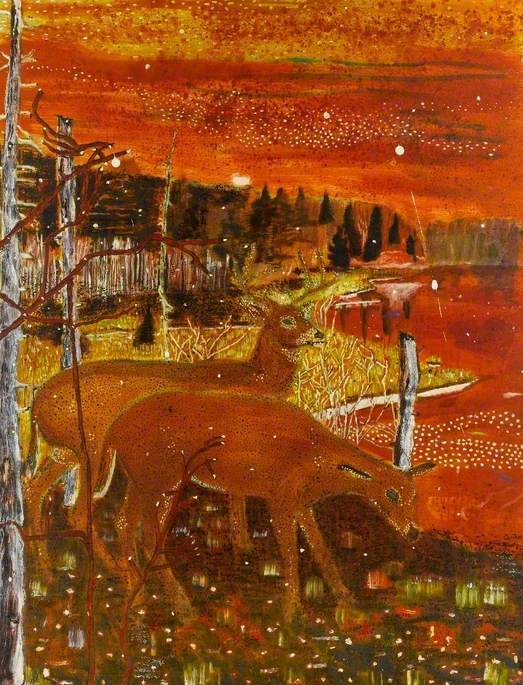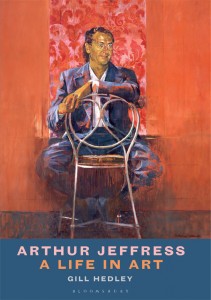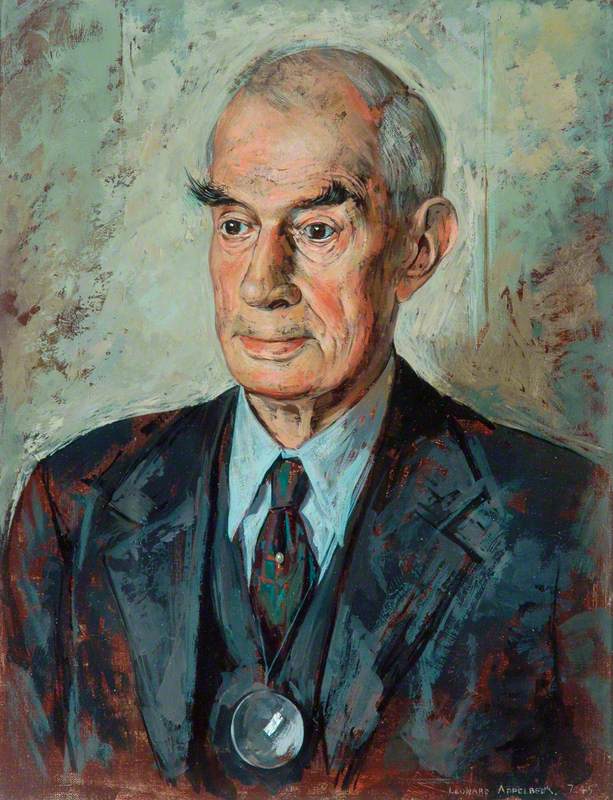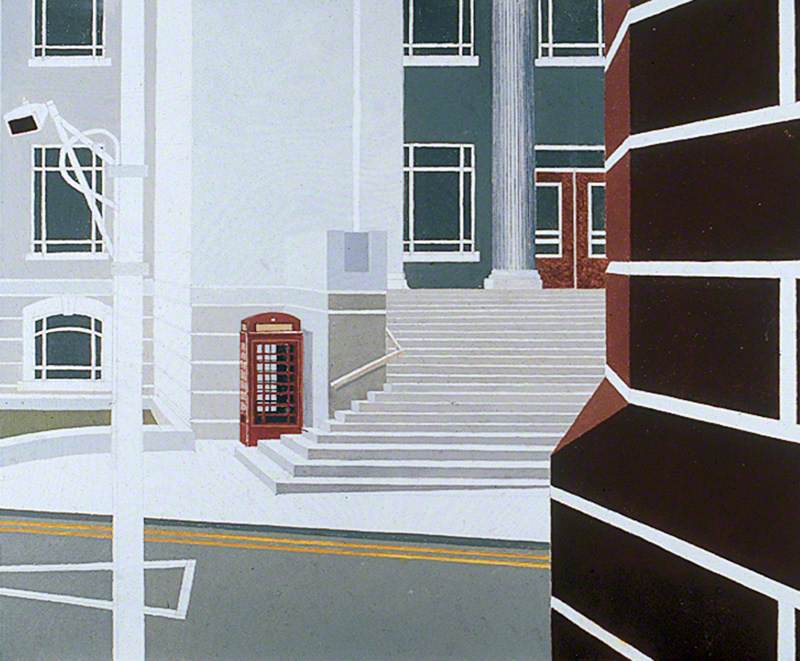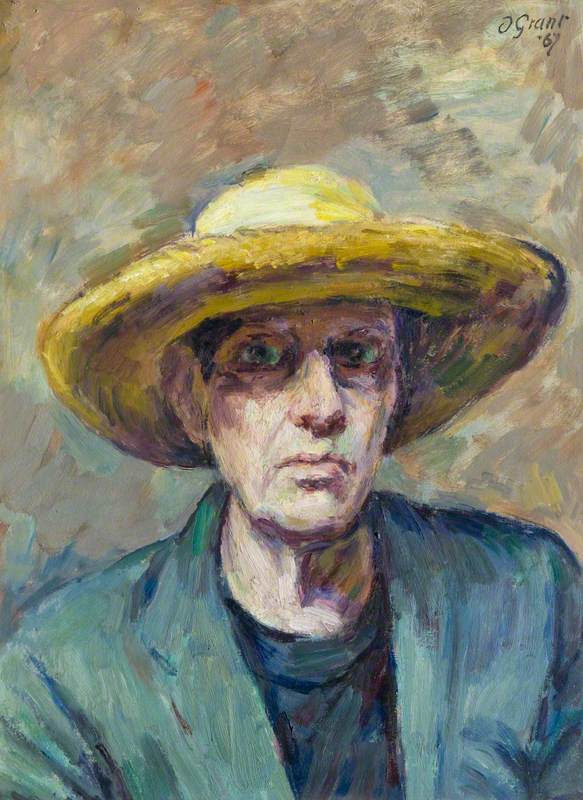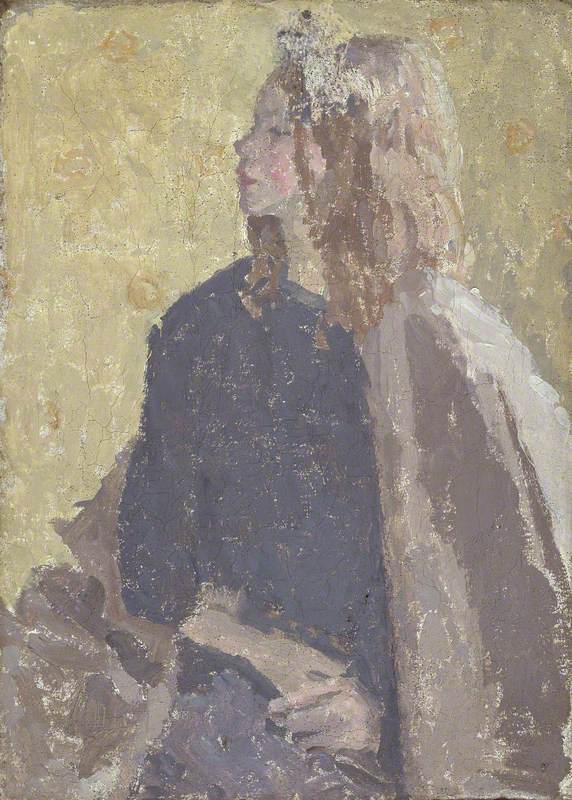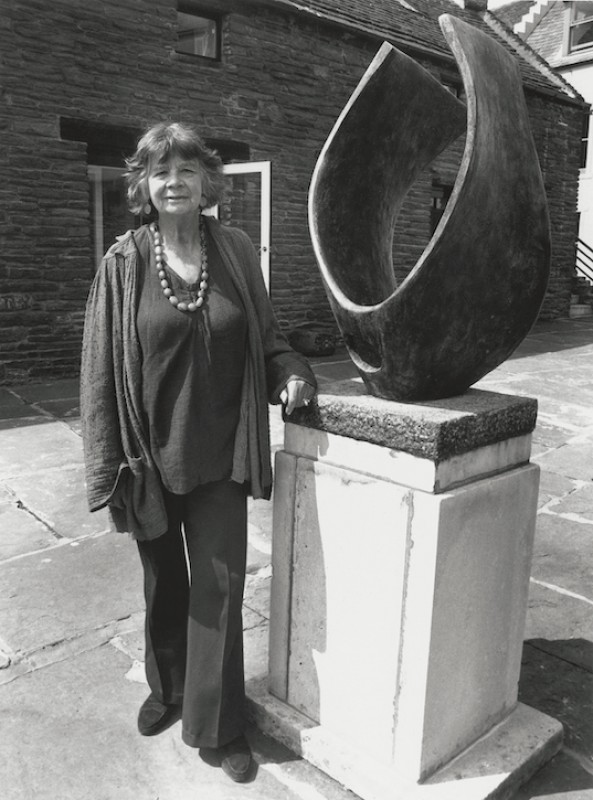Spending the public's money is always a serious matter, but it can also be great fun: and, looking back over a career of well over 50 years in the arts, variously as painter, teacher and art critic, I realise that for me the late 1970s and early 80s were particularly active times in this respect. The four paintings I have chosen to write about all came into public collections around that time, and, whether directly or indirectly, I had a hand in their acquisition. I do think of them, at least in a small way, as 'my paintings'.
’Self Portrait with Mug’ by William Packer NEAC PS RBA, as seen in our 2018 Annual Exhibition. The show may be over for another year, but this - along with many more member artists' work - is now available to buy from our website: https://t.co/wTBE5Qlh8D #art #painting #NEAC pic.twitter.com/AmP2RTwV7E
— New English Art Club (@newenglishart) December 4, 2018
Dates do become rather blurred but, from around 1976 until about 1982, I was on the committee of the Contemporary Art Society, a charity that raises money to buy contemporary art for presentation to subscribing galleries and institutions. In those days one of the perks was, and perhaps still is, that as they approached the end of their term, two by two, members were given a sum of money to spend entirely at their discretion. My turn came, I think, during 1981, and with it an allowance of some £18,000: quite a lot at the time.
The policy I set myself was to look to artists I admired but whom I considered to be either unduly neglected or not yet established: and I would keep to an average of £1,000. Norman Stevens, a good friend, fitted the bill. He was one of a remarkably gifted group of artists from Bradford Art School (his and David Hockney's parents were close friends) that had come down to the Royal College in the late 1950s, but his career had stalled rather, after early success.
A particular interest of his was the play of strong light and shadows across complex forms. By then he was better known for his prints, but I wanted a painting, and, if at all possible, one of those of dappled light falling through foliage onto rickety structures such as old barns, cattle feeders and farm gates, of which he had lately made several. None was available, however, so Norman offered to paint one for me, hence the painting's title, and somewhat later a fruitless curatorial search for Packer's Farm. The painting was given appropriately to the University of Leeds, where Norman had been a Gregory Fellow.
From 1976 until 1983 I was also member of the advisory committee to the Government Art Collection, which furnishes governmental offices, ministries, embassies and high commissions with suitable British works of art. I believe things are now managed rather differently, but in those days we had an annual purchasing budget of around £120,000, which we split more or less evenly between ancient and modern. And if anything caught our eye that we thought worth acquiring, we were free to ask for it to be put to the committee.
Norman Blamey was another artist I had long admired, and he too became a friend. But he worked slowly, mostly to commission, and for very many years had shown only at the RA, which he eventually joined in 1971. In 1980, however, I heard that he was to have a small loan exhibition, indeed his very first one-man show, at the short-lived gallery at the Roundhouse, at Chalk Farm, and its director, Jim Latter, told me that some of the work were for sale.
His took as his principal subjects either the eucharistic rituals of the Church of England – for he was a devout High Church Anglican – or else his close family home. Of this last, In the Cellar Mirror is at once entirely characteristic in its immaculate technique, and yet perhaps more relaxed than most in its intimacy and mood.
Its owner was asking, I seem to remember, all of £800. I put it before the committee, and I'm told it has proved to be one of the most requested pictures in the Collection, seldom off a wall.
Karl Weschke too became a friend, though I confess I approached our first encounter with some misgiving. In 1976 I had been commissioned by the Arts Council to select the first British Art Show, which would open in Sheffield late in 1979 and go on to Newcastle and Bristol. It was to be an entirely personal choice, so again I looked out, though not exclusively, for the neglected and unknown. So it was that I spent much of the next three years criss-crossing the country from Aberystwyth to Southwold, and from Inverness almost to Land's End.
Karl was that 'almost'. He lived and worked in a cottage in a lane high above the sea at Cape Cornwall, as wild and remote a place as a place can be. I was told he could be 'difficult', suspicious of critics, and could well prove uncooperative. I need not have worried.
He had come to England as a prisoner, captured as a member of the Hitler Youth fighting with the SS in the last days of the War. He once told me that, on being told that the War was over, he refused to believe something so manifestly absurd. Though he retained his German nationality, and admitted to feeling always the perpetual outsider, he stayed in England for the rest of his life.
He had been friendly with the painters of the post-war St Ives School, but never of it, and though he had shown his work from time to time, it was never with any sustained success. So it delights me still not only that my British Art Show marked his reappearance on a national stage, but that the two paintings I chose on that first visit went on to join two such important national collections.
William Packer, art critic and artist
